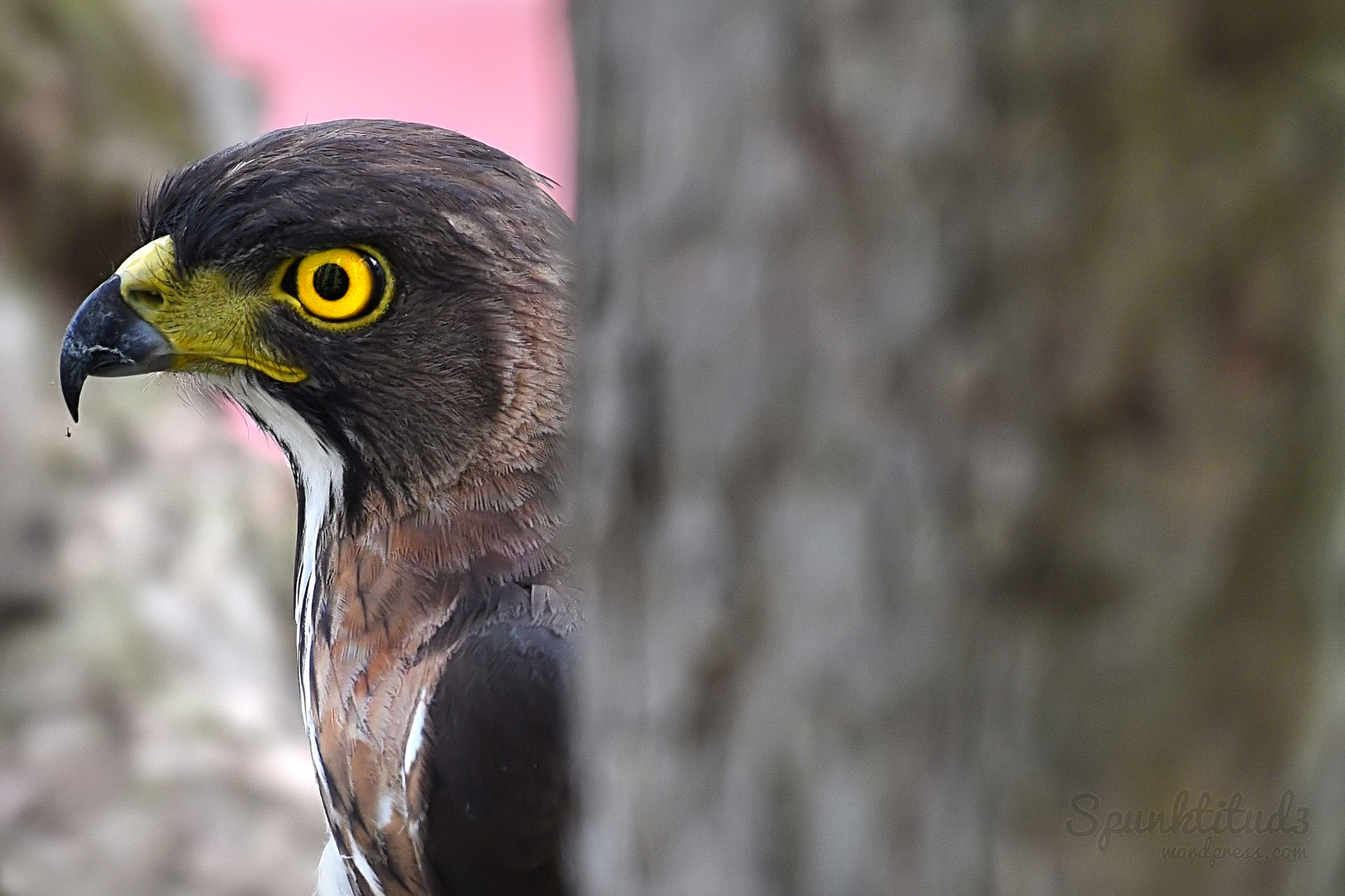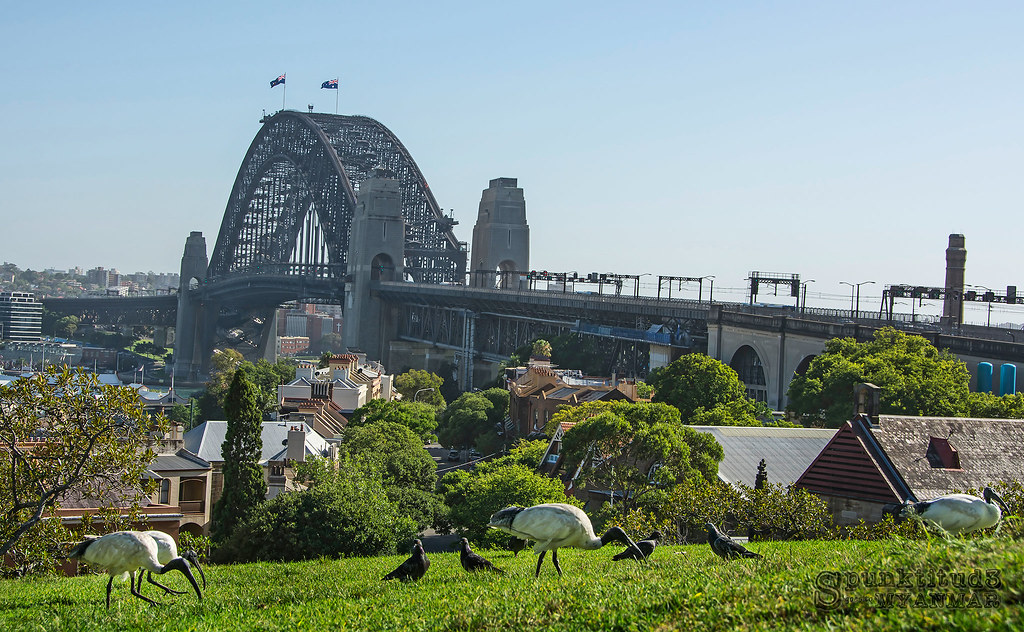
Happy Chinese New Year! It’s the Year of the Rooster. Wishing everyone a prosperous year ahead, may you have something fabulous to crow about everyday :)
Tag Archives: birds
Photography – Crested Goshawk
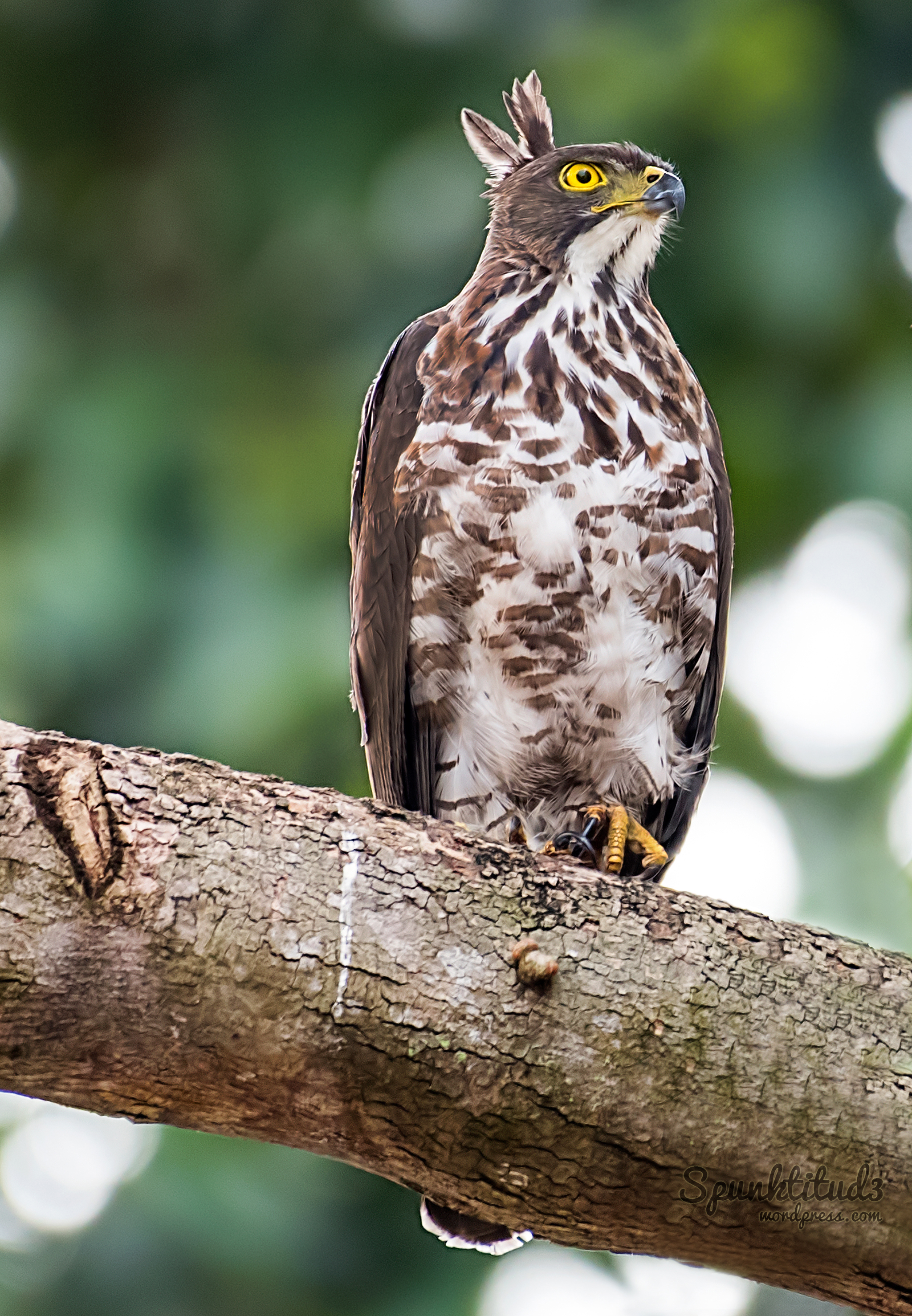 The Crested Goshawk (Accipiter trivirgatus) is a bird of prey from tropical Asia, and the only resident and rare accipiter in Singapore.
The Crested Goshawk (Accipiter trivirgatus) is a bird of prey from tropical Asia, and the only resident and rare accipiter in Singapore.
There are 11 subspecies of goshawks, with the one in Singapore being indicus whch has the widest range from north India east to China and south to Singapore. Know as Helang-Sewah Berjambul in Malay or 凤头鹰 in Chinese, this bird of prey is found in tropical and warm subtropical areas. The Crested Goshawk can be identified by its short crest, yellow eye-rings, 6 fingers, short wings when perched, thick tail bands and thick tarsi.
This bird is a female who recently found a liking for a particular tree branch just outside my friend’s flat. The crested goshawk inhabits deciduous and evergreen forests in humid lowlands and foothills, and have been sighted in nature reserves and parks in Singapore, so I guess the loss of their habitat has gradually forced them to come to housing estates. This particular female bird was teaching its baby goshawk, which came earlier in the morning, how to hunt.
The crested goshawk preys on large insects, small birds, small mammals (such as fruit bats, rats) and reptiles. It surprises its prey by diving from its perch. We have seen it coming back with rats or blood on its beak.
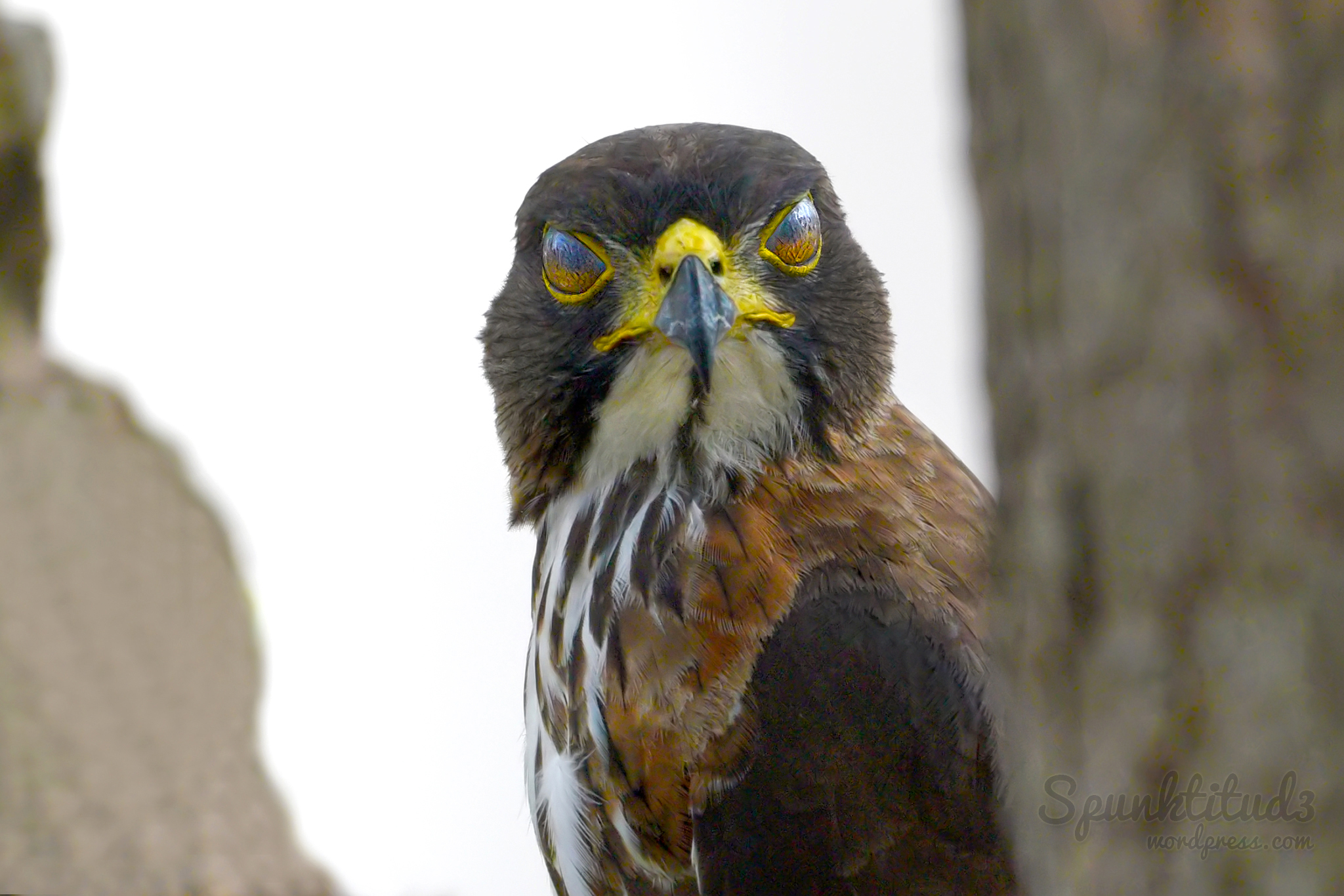
And she blinked at me. Somehow she reminds me of a Marvel Hero like this. Well, as long as I don’t look like food to her I am fine with the attention. The crested goshawk is small compared to most other raptors, measuring 30 to 45 cm in length and weighing about 350 grams. The female goshawk is slightly larger weighing around 550 grams. The wingspan is 50 to 80 cm. The male has a dark brown crown with a grey head and sides, black moustachial and throat stripes. The female goshawk has brown plumage. Its call is a high-pitched tone.
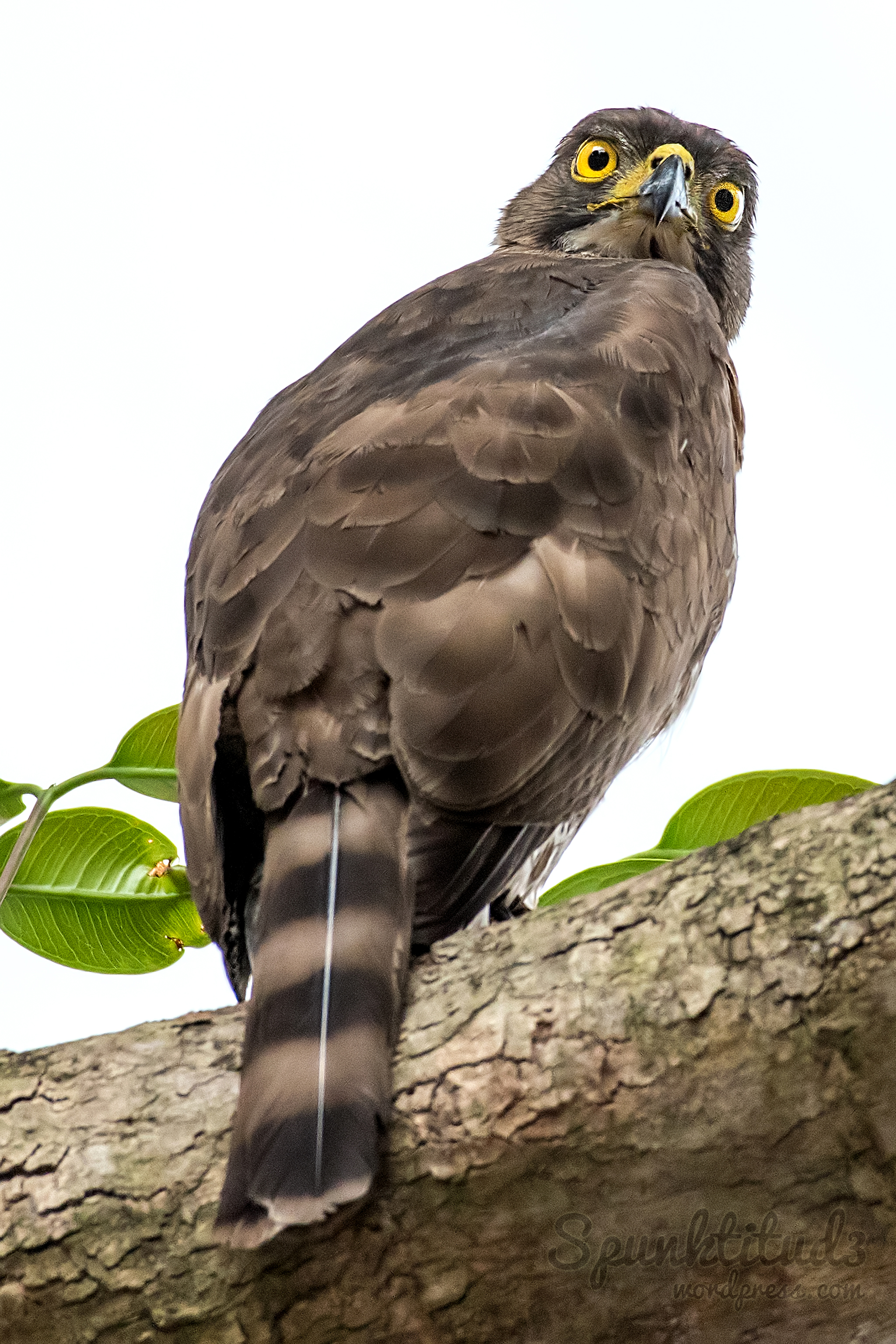 Glad I managed to see this pretty raptor (I have decided to name her Bunny – inspired by the first photo). Hope she and her baby will continue to co-exist well with urban Singapore.
Glad I managed to see this pretty raptor (I have decided to name her Bunny – inspired by the first photo). Hope she and her baby will continue to co-exist well with urban Singapore.
Information source: Singapore Raptors
Botswana – Blue Waxbill

The blue waxbill (Uraeginthus angolensis), also called blue-breasted cordon-bleu, is a small estrildid finch (about 12.5cm) found in open grassland, savanna, bush or wooded areas and cultivated lands of South Africa. We saw these cuties in Botswana’s Mashatu Game Reserve. It needs to drink regularly, hence is often found in areas with a constant supply of surface water. Its diet consists of small seed and insects (for protein especially during breeding period). Interested males sing and dance when courting a female, with a blade of grass in his beak (it must have Spanish blood, reminds me of flamenco!). Blue waxbills can live for a decade or more.
Listen to the chirpings of a blue waxbill.
Photography – The Oriental Pied Hornbills of Pulau Ubin

I journeyed to the island of Pulau Ubin in anticipation of seeing this magnificent bird. There I was, walking all the way with my eyes focused on the trees above, and I walked right in front of this little fella who was feasting on a bunch of bananas at eye-level in front of me.
Fingers trembling, I scrambled to change my telephoto lens to a shorter one, and managed only one decent shot before the shy bird flew off. Wow, what an exhilarating moment to remember! Morale of the story? Don’t walk with your nose up in the air, sometimes the best things in life are just right in front of you ;)
The Oriental Pied Hornbill (Anthracoceros albirostris) is a fascinating bird that is distinguished by its large down-curved yellow beaks and unique hollow structure (casque) above their bills. Common to Southeast Asia, there used to be three Hornbill species in Singapore until they became extinct in the 19th century due to hunting and loss of habitat. Years later in 1994, a pair of Oriental Pied Hornbills were spotted once more in Pulau Ubin, most likely flown in from Malaysia.
To survive in modern Singapore, these hornbills have learnt to live in ‘HDB apartments’ much like the rest of Singaporeans – while they generally nest in natural tree holes in the wild (which are very limited locally), they now live in artificial nest boxes put up by the Singapore Hornbill Project (a research collaboration between Jurong Bird Park, NParks, Nanyang Technological University and independent researchers Marc Cremades and Ng Soon Chye). Their ‘modern apartments’ are pretty hi-tech too – the nest boxes are equipped with sensors and cameras to help researchers study the species. Talk about the origin of reality TV lol.
The hornbill’s breeding habits are pretty intriguing – at the start of the breeding season, females seal themselves into a nest box or tree cavity using mud, vegetation and droppings. They stay there for three months to incubate their eggs and raise the chicks, and are solely reliant on the male partner to bring them food through a narrow slit in the seal. Luckily, hornbills mate for life, so the males are pretty loyal to their responsibility.
It’s heartening to see the efforts put in by a tiny island like Singapore to keep its biodiversity intact amidst rapid urban development. While it is inevitable that urban jungles quickly build up, we should never forget the greatest treasures that will last through time, are nature’s own.

